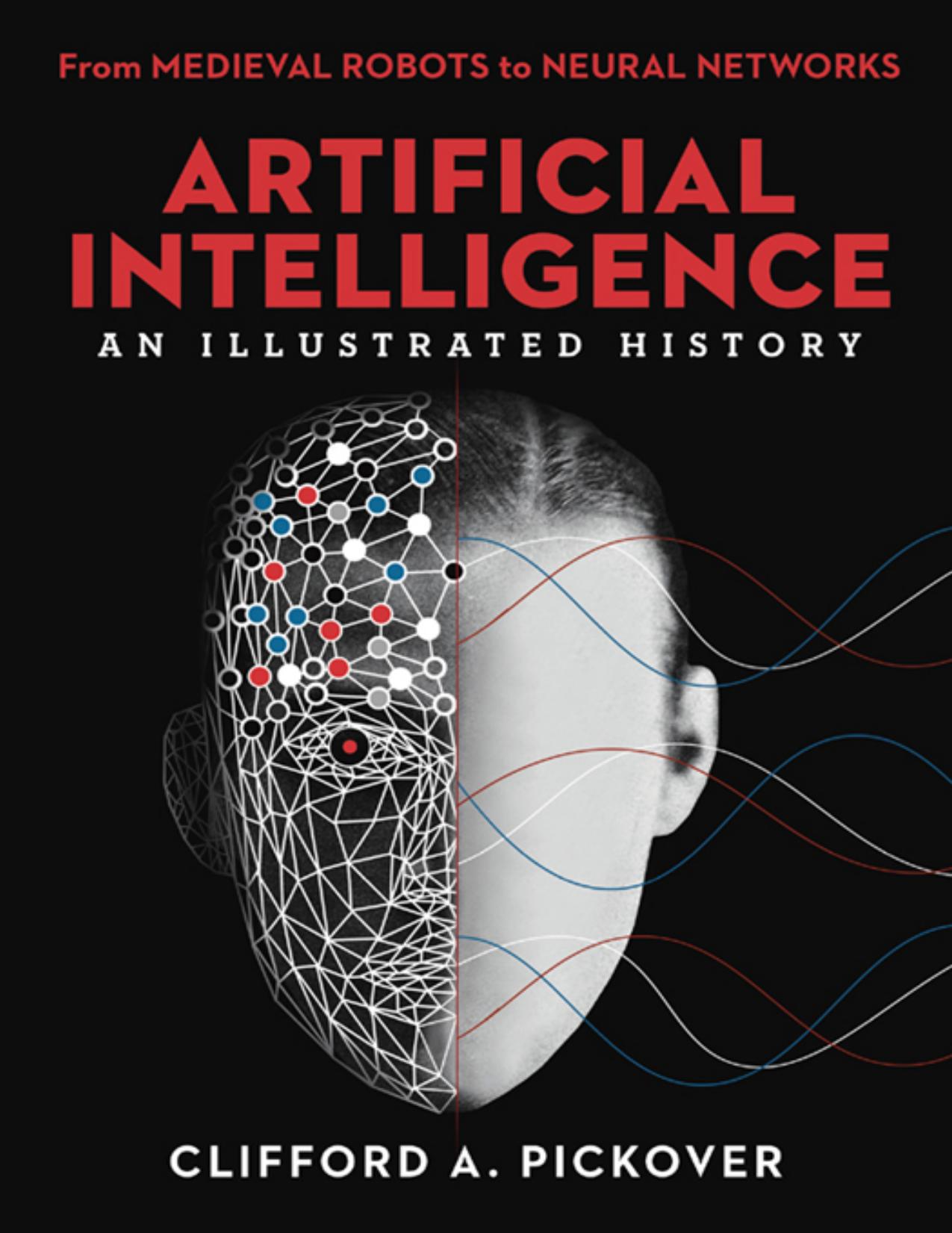Artificial Intelligence: An Illustrated History by Clifford A. Pickover

Author:Clifford A. Pickover
Language: eng
Format: epub, azw3, pdf
SEE ALSO Aristotle’s Organon (c. 350 BCE), Tower of Hanoi (1883), Perceptron (1957), Machine Learning (1959), Expert Systems (1965), Fuzzy Logic (1965)
Joseph Licklider wrote: “The hope is that . . . human brains and computing machines will be coupled together very tightly, and that the resulting partnership will think as no human brain has ever thought.”
1960
LICKLIDER’S “MAN-COMPUTER SYMBIOSIS”
In 1960, psychologist and computer scientist Joseph Licklider (1915–1990) published a seminal paper titled “Man-Computer Symbiosis.” He begins his essay by explaining a symbiotic relationship of a fig tree, which is pollinated by a Blastophaga wasp whose eggs and larvae derive nourishment from the tree. In the same way, Licklider proposed, humans and computers could form a symbiotic relationship. In the early years of symbiosis, humans would set the goals and formulate the hypotheses as computers prepared the way for insights. Some problems, he wrote, “simply cannot be formulated without computing-machine aid.”
Rather than envisioning computer-based entities replacing humans, Licklider was more aligned with Norbert Wiener (1894–1964), whose theories of cybernetics tended to focus on close interactions between humans and machines. In the paper, he explains: “The hope is that . . . human brains and computing machines will be coupled together very tightly, and that the resulting partnership will think as no human brain has ever thought and process data in a way not approached by the information-handling machines we know today.”
Licklider also discusses “thinking centers” that he believed would incorporate the functions of traditional libraries, and he suggested the need for natural-language processing for symbiosis.
In his essay, Licklider concedes that “electronic or chemical ‘machines’ will outdo the human brain in most of the functions we now consider exclusively within its province,” and he provides examples of chess playing, problem solving, pattern recognizing, and theorem proving. He clarifies that “the computer will serve as a statistical-inference, decision-theory, or game-theory machine to make elementary evaluations of suggested courses of action. . . . Finally, it will do as much diagnosis, pattern-matching, and relevance-recognizing as it profitably can. . . .”
Nearly sixty years later, Licklider’s paper still raises important questions about the potential union of human intelligence and AI: When the day comes that we have a coupling with machines even more than we have today, will a symbiotic person still be considered a “human”? Will such a person ever consider disengaging from the computer?
Download
Artificial Intelligence: An Illustrated History by Clifford A. Pickover.azw3
Artificial Intelligence: An Illustrated History by Clifford A. Pickover.pdf
This site does not store any files on its server. We only index and link to content provided by other sites. Please contact the content providers to delete copyright contents if any and email us, we'll remove relevant links or contents immediately.
Whiskies Galore by Ian Buxton(41937)
Introduction to Aircraft Design (Cambridge Aerospace Series) by John P. Fielding(33092)
Small Unmanned Fixed-wing Aircraft Design by Andrew J. Keane Andras Sobester James P. Scanlan & András Sóbester & James P. Scanlan(32763)
Craft Beer for the Homebrewer by Michael Agnew(18196)
Turbulence by E. J. Noyes(7977)
The Complete Stick Figure Physics Tutorials by Allen Sarah(7336)
Kaplan MCAT General Chemistry Review by Kaplan(6899)
The Thirst by Nesbo Jo(6877)
Bad Blood by John Carreyrou(6581)
Modelling of Convective Heat and Mass Transfer in Rotating Flows by Igor V. Shevchuk(6406)
Learning SQL by Alan Beaulieu(6237)
Weapons of Math Destruction by Cathy O'Neil(6214)
Man-made Catastrophes and Risk Information Concealment by Dmitry Chernov & Didier Sornette(5956)
Digital Minimalism by Cal Newport;(5704)
Life 3.0: Being Human in the Age of Artificial Intelligence by Tegmark Max(5512)
iGen by Jean M. Twenge(5384)
Secrets of Antigravity Propulsion: Tesla, UFOs, and Classified Aerospace Technology by Ph.D. Paul A. Laviolette(5332)
Design of Trajectory Optimization Approach for Space Maneuver Vehicle Skip Entry Problems by Runqi Chai & Al Savvaris & Antonios Tsourdos & Senchun Chai(5037)
Pale Blue Dot by Carl Sagan(4953)
